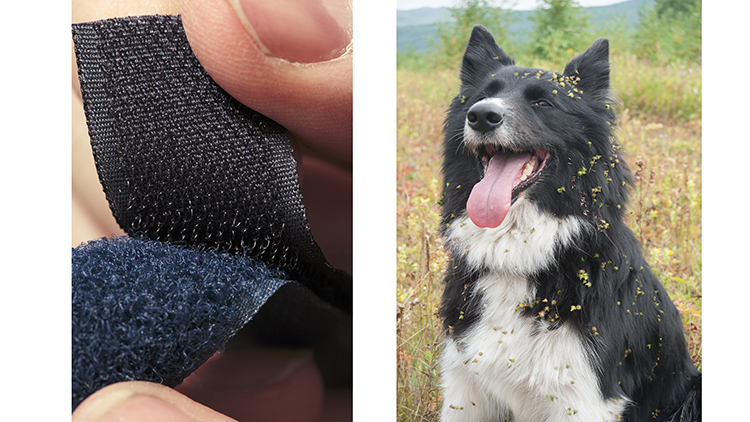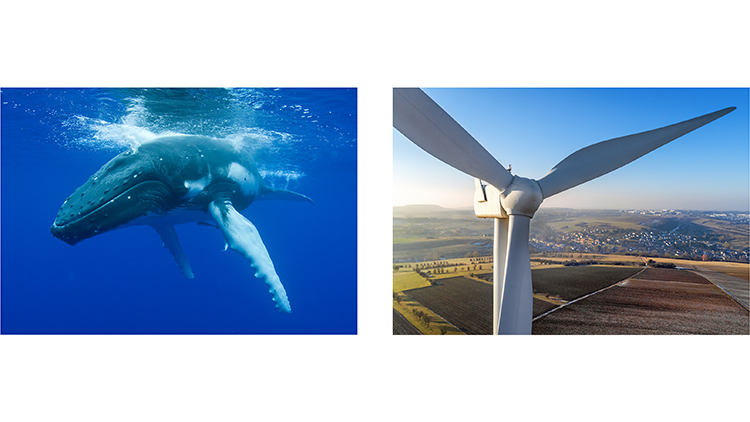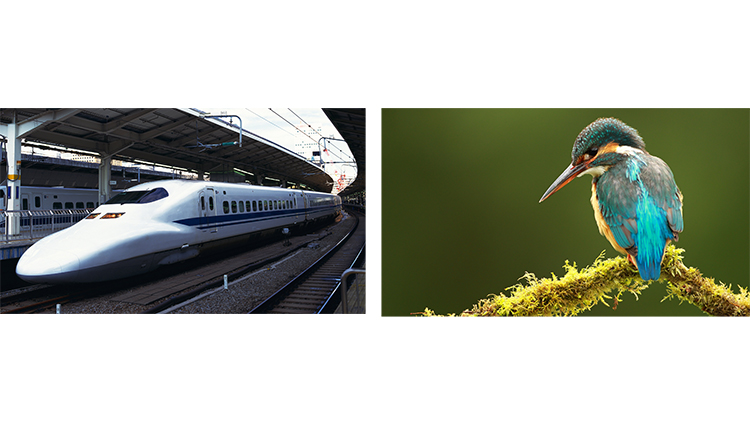
Photo Credit: sirtravelalot/Shutterstock, Jackan/Shutterstock
When you see a new design or product, have you wondered where the idea came from? People get their ideas from many different places. Sometimes they are imitating something they have seen. Sometimes they are copying ideas or shapes they have seen in nature. This is called biomimicry. Bios means “life” and mimesis means “imitate.” When scientists, engineers, and inventors are trying to solve problems, they often look to nature for solutions.
But why look to nature? Over many years, plants and animals have adapted to life on Earth. Nature has designs that are efficient and effective. Designing and making products that are more sustainable and efficient means that people use less energy and have a smaller impact on Earth’s natural resources.

Photo Credit: miblue5/iStock/Getty Images, Ppictures//Shutterstock
What does a wind turbine have in common with a humpback whale? Take a careful look at the shapes in both photos. What do you notice? The humpback whale is massive and heavy, yet it can easily move through the water. Using the same shape as a fin, the blades of a wind turbine move through the air and generate energy. The large blades can move efficiently through the air and generate the maximum amount of energy. Researchers are now testing blades that have “bumps” like the humpback whale and they are finding that these blades generate even more power!

Photo Credit: amana images inc./Alamy Stock Photo, Daniel Trim Photography/Getty Images
Now what do you see? How did a bird influence the way a train was designed? In Japan, they have very fast trains. The problem was that as the trains got faster, they were causing a loud booming sound when they exited tunnels. The sound was waking people up who lived nearby and disturbing the wildlife. Luckily, one of the engineers trying to solve the problem was a birdwatcher. After watching the kingfisher bird, they were inspired by the shape of its beak and head. After redesigning the train, it is 10-15% more energy efficient. It also no longer causes a boom!

Photo Credit: Jasius/Moment/Getty Images
What Do You Think? What can scientists learn from the light reflecting qualities of a butterfly?
Reading Response Click on the links to respond to your reading. Print out the response page or upload it to your classroom site.



